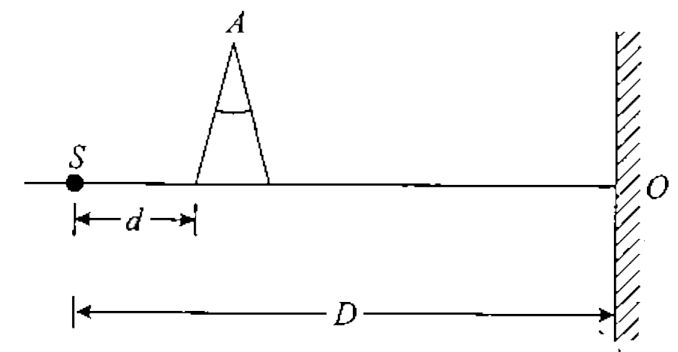Two waves of slightly different frequencies f1andf2(f1>f2) with zero phase difference , same amplitudes ,travelling in the same direction superimpose .
Phenomenon of beats is always observed by human ear
Intensity of resultant wave is a constant
Intensity of resultant wavevariesperiodically with time withmaximumintensity4
A maxima appears at a time 12(f1−f2) later (or earlier) than a minima appears
The correct Answer is:C, D
By defmitions of constructive and destructive interference ofequalamplitude waves option (C)is correct and by definition of beats option (D) is also correct.
Topper's Solved these Questions
- WAVES Book:PHYSICS GALAXY - ASHISH ARORAChapter:WAVES Exercise:Unsolved Numerical Problems for Preparation of NSE, INPhO & IPhO
Explore 135 Videos
- WAVES Book:PHYSICS GALAXY - ASHISH ARORAChapter:WAVES Exercise:Numerical MCQs Single Options Correct
Explore 90 Videos
- WAVE OPTICSBook:PHYSICS GALAXY - ASHISH ARORAChapter:WAVE OPTICSExercise:Unsolved Numerical Problems
Explore 28 Videos
- X-RAYSBook:PHYSICS GALAXY - ASHISH ARORAChapter:X-RAYSExercise:Unsolved Numerica Problem for Preparation
Explore 23 Videos
Similar Questions
Write down the equation of a wave travelling in the negative direaction along x-axis with an amplitude 0.01m, a frequency 550Hz and a speed 330m/s.
View SolutionA man sets his watch by the sound of a siren placed at a distance 1 km away . If the velocity of sound is 330m/s
View SolutionA prism having angle A∘ (which is very small) is placed in front of a point source S at a small distance d. A screen is placed at a large distance D as shown in the figure-6.113. Find the fringe width of interference pattern given that source is emitting light of wavelength λ and refractive index of prism is μ.

View SolutionThe X-ray coming from a Coolidge tube has a cutoff wavelength of 80 pm. Find the kinetic energy of the electrons hitting the target.
View SolutionLet f1:R→Randf2:C→C are two functions such that f1(x)=x3andf2=x3.Prove that f1andf2are not same.
View SolutionTwo waves of slightly different frequencies f1andf2(f1>f2) with zero phase difference , same amplitudes ,travelling in the same direction superimpose .
View SolutionIn a series LCR circuit, at the frequencies f_(1) and f_(2) of AC source, the current amplitude falls to (1)/(sqrt(2)) of the current amplitude at resonance. Then the value of f_(2) - f_(1) is
View SolutionFour open organ popes of different length and different gases at same temperature as shown in figure. Let f_(A),f_(B),f_(C) and f_(D) be their fundamental frequencies then : [Take gamma_(CO_(2)) = 7//5 ] .
View SolutionIf F1andF2 aare two vectors of equal magniudes F such that |F1.F2|=|F1×F2|,then|F1+F2| equals to
View Solutionदो स्रोतों, जिनकी आवृतियाँ f1 और f2 है, की विस्पन्द आवृति होगी-
View SolutionThe correct relation between magnitude of f1 and f2 in above problem is :
(A) f1>f2 (B) f2>f1 (C )f1=f2 ( D) not possible to decide due to insufficient data.
View SolutionF1 तथा F2 पीढ़ी में क्या अन्तर है ?
View Solutionनिम्नलिखित बारम्बारता तालिका का माध्य 57.6 है किन्तु बारम्बारताएँ f1 एवं f2 अज्ञात हैं। अतः अज्ञात बारम्बारताओं f1 एवं f2 का मान ज्ञात कीजिए -

View SolutionA mass m suspended by a spring, oscillates with frequency f1. The same mass m oscillates with frequency f2 if length of the spring is made one-third. Find the ratio f1/f2.
View Solutionदो सदिशों F1 व F2 का परिमाण समान है जिसका मान F है। यदि |F1⋅F2|=|F1×F2| तब |F1+F2| बराबर है
View SolutionWhat is the difference between F1 generation and F2 generation?
View Solution
